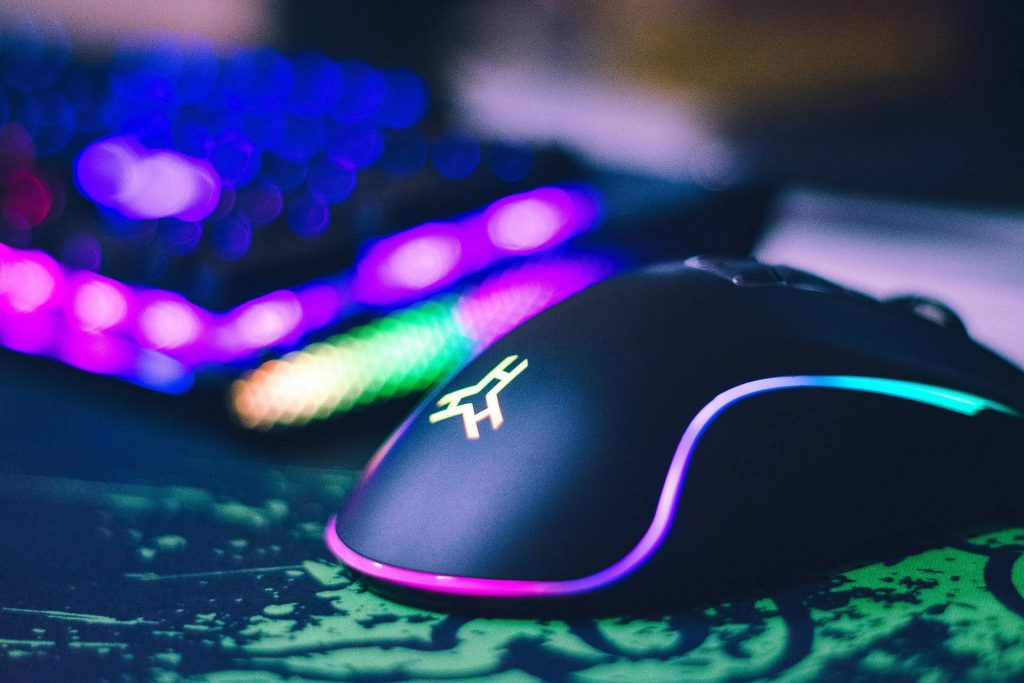… [Trackback]
[…] Find More here to that Topic: blog.neterra.cloud/en/history-of-the-computer-mouse/ […]

It is amazing how addictive technology is. You learn about a new discovery, process, tool, gadget… and then your curiosity sparks up immediately. You want to know more, you want to touch it, you want to get it! Once you try it out, you plundge into hours of experimentation until that piece of technology totally becomes part in your life. And finally, yes, we get so dependent on it.
I am sure many of you are experiencing some ‘romantic’ flashbacks right now. That exciting moment when you unboxed the latest computer, smartphone, game console, app… How does it feel when you accidentally lose or can’t access it?
Well, guys, I am addicted to the cute and practical computer mouse!
During the 40s, computers were not personal but they already existed. Using the arrow keys to move on the screen, was not fast and accurate enough. Really inconvenient.
The solution appeared in 1946 – the trackball! It was created as a part of a British Navy Project about tracking aircrafts on the radar.
At that moment, the mouse was designed so rough and basic: a ball placed on top of spinning metal discs with wires.
Since the UK kept it as a military secret, the input device reached civilians twenty years later.
The first computer mouse was created by Douglas Engelbart in 1964, at the Stanford Research Institute in California. He called it an “X-Y Position Indicator for a Display System”.
The mouse got its name because of the wire it had. It was too similar to a rodent’s tail. Curiously, nobody remembers who first called it like that, but the name stuck.
It was a wooden shell, with a circuit board and two metal wheels to make contact with the surface. The mouse could go up and down or side to side, but not at the same time.
In 1972, Bill English, a computer engineer working for Xerox Palo Alto Research Centre, created the “ball mouse”. This was part of the Xerox Alto computer, the first personal system with a graphical user interface.
In this attempt, there were no wheels but a ball to move the mouse in any direction. The ball was in contact with axles attached to some rollers. With every movement, the axles produced electrical pulses sent to sensors that registered the direction the mouse was moving in.
Then, 1983 was an important year for the device. Microsoft updated MS-DOS program Microsoft Word, creating the first PC-compatible mouse.
Apple, Atari, and Commodore jump on the wave as well. And just one year later, Apple released the first Macintosh and that was a definitive step to popularize the device.
The 80’s also brought laptops and with them – another innovation. Those pointing sticks looking like a “nipple” and the first trackpads.
The developments during the 90’s gave us ergonomic changes and the optical mouse. This one was created years before but it was not mass-produced because its components were expensive. Finally, in 1999, it got in the market. A more resistant mouse that swiftly moved on surfaces like pads, tabletops, and even your pants, thanks to its optical sensors.
In 2004, Logitech got the spotlight with its laser mouse. Its laser beam offered much more accurate tracking because it could identify surfaces under the mouse more precisely than LEDs.
Gaming really appreciated this technology and pushed through the years for upgrades such as sensitivity adjustments on the go and more powerful processors that could scan surfaces more easily and process movement more frequently.
The mouse has changed its personality through time. It has lost its tail! How long can it last in a world with touchscreens and voice commands?
If you liked this article, you may be interested in these as well:
… [Trackback]
[…] Find More here to that Topic: blog.neterra.cloud/en/history-of-the-computer-mouse/ […]
… [Trackback]
[…] Here you can find 97073 more Information to that Topic: blog.neterra.cloud/en/history-of-the-computer-mouse/ […]
… [Trackback]
[…] Find More Info here on that Topic: blog.neterra.cloud/en/history-of-the-computer-mouse/ […]
… [Trackback]
[…] There you can find 87119 additional Info on that Topic: blog.neterra.cloud/en/history-of-the-computer-mouse/ […]
… [Trackback]
[…] Read More Info here on that Topic: blog.neterra.cloud/en/history-of-the-computer-mouse/ […]
… [Trackback]
[…] Find More to that Topic: blog.neterra.cloud/en/history-of-the-computer-mouse/ […]
… [Trackback]
[…] Read More to that Topic: blog.neterra.cloud/en/history-of-the-computer-mouse/ […]
… [Trackback]
[…] Here you will find 20967 additional Info on that Topic: blog.neterra.cloud/en/history-of-the-computer-mouse/ […]
… [Trackback]
[…] Read More Information here to that Topic: blog.neterra.cloud/en/history-of-the-computer-mouse/ […]
… [Trackback]
[…] Find More Info here on that Topic: blog.neterra.cloud/en/history-of-the-computer-mouse/ […]
… [Trackback]
[…] Read More to that Topic: blog.neterra.cloud/en/history-of-the-computer-mouse/ […]
… [Trackback]
[…] Find More on that Topic: blog.neterra.cloud/en/history-of-the-computer-mouse/ […]
… [Trackback]
[…] Here you can find 38518 more Info on that Topic: blog.neterra.cloud/en/history-of-the-computer-mouse/ […]
… [Trackback]
[…] Read More on that Topic: blog.neterra.cloud/en/history-of-the-computer-mouse/ […]
… [Trackback]
[…] Information on that Topic: blog.neterra.cloud/en/history-of-the-computer-mouse/ […]
… [Trackback]
[…] Read More on that Topic: blog.neterra.cloud/en/history-of-the-computer-mouse/ […]
Thanks for finally writing about > History of the computer mouse – Neterra.cloud Blog Chat gpt gratis
… [Trackback]
[…] Find More Information here on that Topic: blog.neterra.cloud/en/history-of-the-computer-mouse/ […]
… [Trackback]
[…] Find More Information here on that Topic: blog.neterra.cloud/en/history-of-the-computer-mouse/ […]
… [Trackback]
[…] Read More: blog.neterra.cloud/en/history-of-the-computer-mouse/trackback/ […]
Bandar Taruhan Bola & Casino Online dengan Pasaran Lengkap
blog topic
… [Trackback]
[…] Info on that Topic: blog.neterra.cloud/en/history-of-the-computer-mouse/ […]
… [Trackback]
[…] Read More here to that Topic: blog.neterra.cloud/en/history-of-the-computer-mouse/ […]